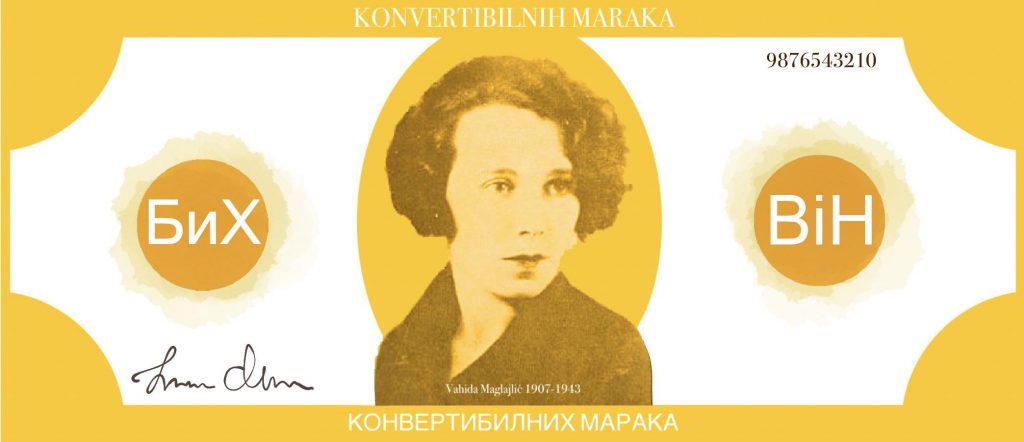 Regarding the fact that the Bosnian-Herzegovinian women are not represented on BH banknotes, Sarajevo Open Centre has sent the initiative to the Central Bank of Bosnia and Herzegovina in which we suggested that Adela Ber Vukić, Mica Todorović, Vahida Magajlić, Vera Šnajder and Laura Papo Bohoreta should be placed on Bosnian-Herzegovinian banknotes. Below you can find short biographies of these women.
Regarding the fact that the Bosnian-Herzegovinian women are not represented on BH banknotes, Sarajevo Open Centre has sent the initiative to the Central Bank of Bosnia and Herzegovina in which we suggested that Adela Ber Vukić, Mica Todorović, Vahida Magajlić, Vera Šnajder and Laura Papo Bohoreta should be placed on Bosnian-Herzegovinian banknotes. Below you can find short biographies of these women.
Adela Ber Vukić (1888-1966) was born in Tuzla. She was the first trained female painter in Bosnia and Herzegovina. She graduated from a girls’ school and then enrolled in the Teacher Training School. In 1908 she moved to Vienna to a private painting school and from 1910 until 1914 attended the Art School for Women.
Mica Todorović (1900-1980) was born in Sarajevo. Besides Adela Ber Vukić, she was one of the most significant BH artists. She graduated from the Academy of Fine Arts in Zagreb. The drawings she made after she had went through the terrors of concentration camps are shocking views and documentation on human suffering. She was a member of the Academy of Science and Arts of Bosnia and Herzegovina.
Vahida Maglajlić (1907–1943) was born in Banja Luka. From childhood, Vahida displayed a decisive spirit and spite against all social norms and expectations of a patriarchal environment. She was a secretary, and later president of the Women’s Movement. She fought for emancipation and rights of women. At the First Pan-Country Conference of AFŽ, she was appointed as member of AFŽ Central Committee. She was killed on 1 April 1943 in the village of Velika Ruiška and proclaimed national heroine on 20 December 1951.
Vera Šnajder (1904–1974) was an excellent mathematician and scientist. During her professional development at the Henri Poincaré Institute in Paris, Vera Šnajder published her first scientific work in Comptes rendus de l’Académie des sciences. This is also the first scientific work in the field of mathematics, published by an author born in BiH. She took part in the establishment of the Faculty of Philosophy in Sarajevo, and especially in organising the Mathematics Course, later to become the Mathematics Department, which she led for many years. She was
also a president of the BiH Association of Mathematicians, Physicians and Astronomers and organiser of the 4th Congress of Mathematicians, Physicians and Astronomers of Yugoslavia, held in 1965 in Sarajevo.
Laura Papo Bohoreta (1891-1942) wrote poetry, short stories and scripts for theatre plays in Spanish Ladino language, which were performed and proved very popular among her compatriots. She recorded the customs, periods, language and culture of Sephardic community, thereby making an invaluable contribution to present knowledge about this period. In 1932, Bohoreta wrote the piece Sephardic Woman in Bosnia [Sefardska žena u Bosni], portraying details of the life of Sephardic women from birth to death. She believed that women’s development should not depend on the environment, but on themselves, on their desire to progress.
By doing this we believe that, at least partly, Bosnian-Herzegovinian women will get their place in public in order to reduce gender inequality and unequal representation, and to symbolically show that the work and contributions of these significant women from BH history is being valued.